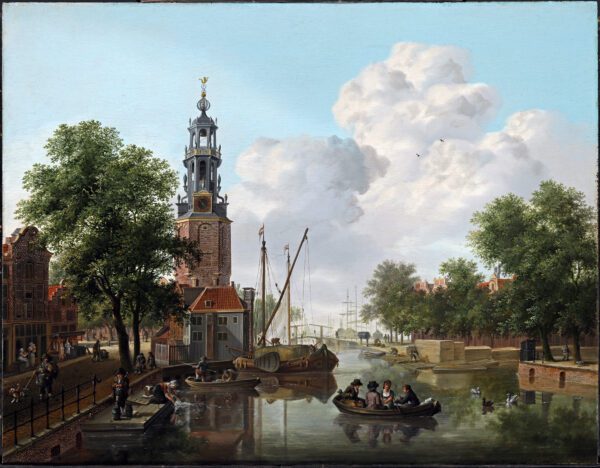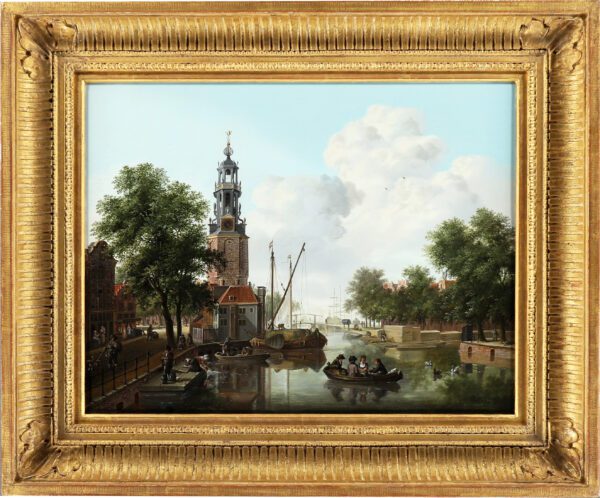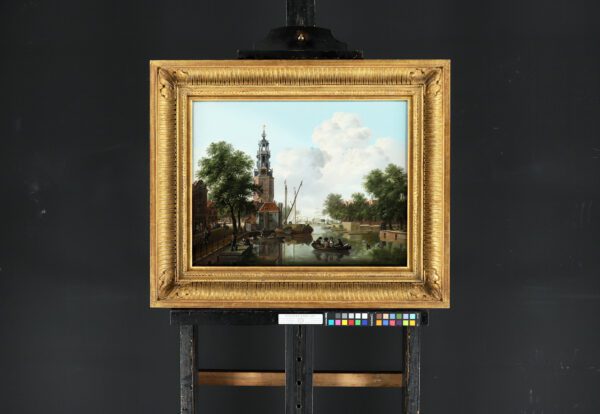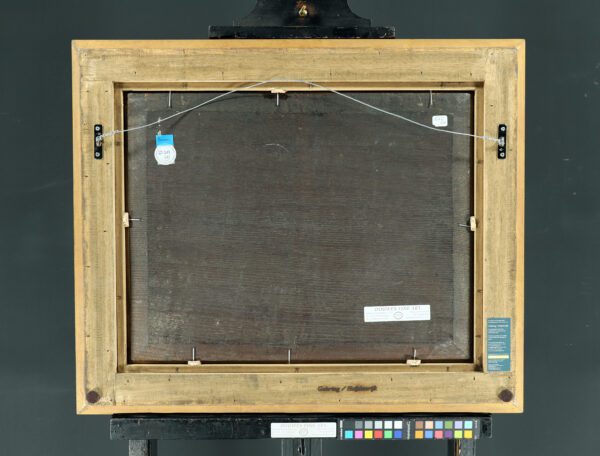“A view of Amsterdam with the Montelbaanstoren”
Oil on panel: 40,5 x 51,3 cm;
remnants of a signature, lower left
"*" indicates required fields
Notes
The Montelbaanstoren was built in 1516, as a part of the wall of Amsterdam, for the purpose of defending the city. In 1606 the decorative top half was designed by Hendrik de Keyser, making the tower 48m. Due to the third Duke of Alba proposing the addition of a castle to the tower, named the Monte Albano. The tower then became known as the Monte Albano Toren, which over years evolved into “Montelbaanstoren.” The construction of the castle fell through, but the name stuck.
Over time, the believed original white finishing coat wore off, revealing a lead blue undertone. In 1966 the department for Public Works began their ‘white tower plan’. Where the aim was to restore the tower to its original white colour, found through remnants of the remaining finishing coat. The tower had undergone several new colour schemes in recent history, finally landing on its believed original colour, a sandstone white. This history is commonly found through the artworks depicting the Montelbaanstoren, where they show the tower in its lead blue colouring. You can still visit the Montelbaanstoren today in Amsterdam.
The artist, Isaac Ouwater, was born in Amsterdam, Netherlands, 1748. He spent his entire life in Amsterdam, specializing in painting cityscapes. He would also travel to create sketches of cities to bring back to his studio. Making many city portraits of Utrecht, Haarlem, The Hague, Delft, Edam and Hoorn. Most of which are found in a smaller format, compared to Ouwater’s Amsterdam paintings.
It is believed that Ouwaters father, Jacobus Ouwater, was a landscapes and still life painter. which ignites the speculation that Isaac Ouwaters originally studied underneath his father.
Ouwater worked similarly to Jan van der Heyden and Gerrit Berckheyde. Where similarly to van der Heyden, Ouwater worked precisely, in regard to the locations being depicted. Ouwater differentiates himself through clearly depicting the groups of people within his works. Being so detail orientated that even the joints of the people depicted can be deciphered.
Douwes Fine Art once had another Isaac Ouwater painting, which also depicted the Montelbaanstoren. Revealing that he must have painted the same tower for different clients. The prior painting is named “The Montelbaanstoren in Amsterdam” dated 1777. This painting aided in the identification of Isaac Ouwater. Where the remnants of his signature reveal a distinct I. This claim is supported by Ouwaters distinct and extremely detailed technique. If one views both paintings, there are many reoccurring detailes,
such as the women in red doing her laundry. She is specifically showcased in both paintings, in the same place, attire, and action.
Provenance
- Private collection, The Netherlands.







